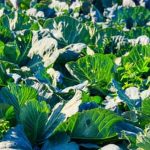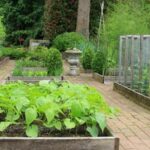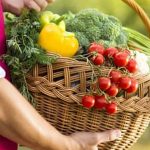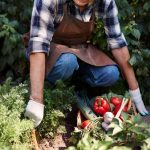Do you need to pollinate indoor vegetable gardens? As indoor gardening continues to gain popularity, understanding the key factors for successful plant growth becomes essential. Pollination plays a crucial role in the development of vegetable plants, even in indoor settings. Whether you’re new to gardening or looking to enhance your indoor garden, knowing the ins and outs of pollination is vital for cultivating thriving vegetables.
Indoor vegetable gardening offers a convenient and accessible way to grow fresh produce year-round. However, unlike outdoor gardens that rely on natural pollinators such as bees and butterflies, indoor gardens require more hands-on involvement when it comes to pollination. Understanding the concept of pollination in the context of indoor vegetable gardening can make a significant difference in the health and yield of your plants.
With the importance of pollination established, it’s crucial to dive into what this process entails, especially in an indoor environment where natural elements are limited. Exploring different techniques and potential challenges can help cultivate a deeper understanding of how to effectively pollinate your indoor vegetable garden. By addressing these aspects, you can set yourself up for success while nurturing your plants within an enclosed space.
Understanding Pollination
When it comes to indoor vegetable gardening, understanding the process of pollination is crucial for the success of your plants. Pollination is the transfer of pollen from the male reproductive organs to the female reproductive organs of a plant, leading to fertilization and the production of seeds. This process is essential for plant reproduction and plays a significant role in the overall health and yield of vegetable plants.
There are two main types of pollination: self-pollination and cross-pollination. Self-pollinating plants have flowers that contain both male and female reproductive parts, allowing them to pollinate themselves. On the other hand, cross-pollinating plants rely on external factors such as wind, insects, or animals to transfer pollen between separate plants. Understanding the specific pollination needs of different vegetable plants is essential for indoor gardeners.
In an indoor environment, the lack of natural pollinators can pose challenges for successful pollination. The limited space and controlled conditions can make it difficult for plants to receive adequate pollen transfer. This obstacle can impact fruit and vegetable production, so finding effective solutions for indoor pollination challenges is essential for ensuring healthy plant growth and a bountiful harvest.
- Self-pollinating vs Cross-pollinating Plants
- Challenges of Indoor Pollination
- Potential Solutions for Indoor Pollination Challenges
Challenges of Indoor Pollination
Indoor vegetable gardening comes with its own set of challenges, one being the limited availability of natural pollinators such as bees and butterflies. Without these insects, indoor gardeners must take on the responsibility of ensuring that their plants are adequately pollinated to achieve healthy yields.
Discussing the Impact of Limited Space on Pollination
Another challenge in indoor pollination is the restricted space available for plant growth. Limited space can lead to overcrowding, which can hinder effective pollination. Additionally, indoor environments may not always provide the ideal conditions for natural pollinators to thrive, further complicating the process.
Exploring Potential Solutions to Indoor Pollination Challenges
To overcome these challenges, indoor gardeners can implement various strategies such as manual pollination techniques, introducing artificial pollinators like vibrating wands or utilizing small fans to mimic wind for pollen distribution. Additionally, creating an optimal environment for plant health by managing lighting, humidity levels, and air circulation can also contribute to successful indoor pollination. By understanding these challenges and exploring innovative solutions, indoor gardeners can ensure their vegetable plants receive adequate pollination for optimal growth and production.
Benefits of Pollination in Indoor Vegetable Gardens
When it comes to indoor vegetable gardening, the importance of pollination cannot be overstated. Pollination plays a vital role in the growth and yield of vegetable plants, ultimately impacting the production of fruits and vegetables. Understanding the significance of pollination in indoor gardens can help gardeners maximize their plant health and overall productivity.
Here are some key benefits of pollination in indoor vegetable gardens:
- Fruit and Vegetable Production: Successful pollination directly contributes to the production of fruits and vegetables in indoor gardens. Without proper pollination, many plants would not be able to produce the edible crops that gardeners desire.
- Plant Health: Pollination also plays a crucial role in overall plant health. When plants are effectively pollinated, they tend to be healthier and more resilient against diseases and pests, ultimately leading to better harvests.
- Genetic Diversity: Through pollination, vegetable plants can achieve genetic diversity, which is important for maintaining healthy populations. This genetic diversity can lead to stronger, more adaptable plants that are better equipped to thrive in indoor environments.
Understanding these benefits can help indoor gardeners recognize the importance of implementing effective pollination methods as part of their gardening routine. By prioritizing pollination, gardeners can enhance their overall gardening experience by reaping plentiful harvests from their indoor vegetable plants.
Effective Pollination Methods for Indoor Gardens
Manual Pollination Techniques
In indoor vegetable gardening, manual pollination can be an effective method to ensure the successful reproduction of plants. This technique involves transferring pollen from the male part of the flower to the female part by using a small brush or cotton swab. This method is particularly useful for plants that don’t naturally self-pollinate and require assistance for fruit production. By manually transferring pollen, gardeners can mimic the role of natural pollinators and increase the chances of successful fertilization.
Artificial Pollinators
For those facing challenges with manual pollination, artificial pollinators can offer a practical solution for indoor gardens. These devices are designed to simulate the action of bees and other insect pollinators, providing gentle vibrations to dislodge and distribute pollen within the plant flowers. While these tools can be especially beneficial for cross-pollinating plants that typically rely on insects in outdoor settings, they can also aid in achieving successful pollination indoors when natural pollinators are not present.
Plant Health and Humidity
In addition to employing specific pollination methods, maintaining optimal plant health and ensuring suitable humidity levels within the indoor environment are crucial factors in promoting successful pollination. Healthy plants are more likely to produce abundant, high-quality flowers and pollen, increasing the likelihood of successful fertilization. Furthermore, controlling humidity levels in indoor gardens can support more favorable conditions for pollen transfer and germination, ultimately contributing to improved pollination outcomes.
By utilizing effective pollination methods tailored to indoor gardening needs, individuals can overcome the challenges associated with limited access to natural pollinators while fostering healthy and productive vegetable garden environments.
Choosing Pollinator-Friendly Vegetables for Indoor Gardening
When it comes to indoor gardening, choosing the right vegetables can make a significant difference in pollination success. Some vegetable plants are naturally more self-sufficient when it comes to pollination, making them ideal choices for indoor cultivation. These self-pollinating vegetables are well-suited for growing in confined spaces where natural pollinators may not be present.
Examples of self-pollinating vegetables include tomatoes, peppers, and eggplants. These plants have perfect flowers, meaning they contain both male and female reproductive parts, allowing them to set fruit without external assistance.
In addition to self-pollinating varieties, selecting hybrid and heirloom vegetable seeds can also impact pollination success indoors. Hybrid seeds are often bred for specific traits such as disease resistance or higher yields, and these qualities can contribute to overall plant health and viability.
Heirloom seeds, on the other hand, are open-pollinated varieties that have not been subject to genetic modification or hybridization. Their genetic diversity and compatibility with natural pollinators make them attractive options for indoor gardens seeking successful pollination outcomes.
It’s essential to consider the specific needs of each vegetable plant when choosing what to grow in an indoor garden. Understanding the pollination requirements of different vegetable varieties can help maximize the chances of success when cultivating an indoor vegetable garden. By being mindful of the unique characteristics of self-pollinating, hybrid, and heirloom vegetables, individuals can create an environment that promotes healthy growth and abundant yields in their indoor gardens.
| Vegetable Varieties | Pollination Type |
|---|---|
| Tomatoes | Self-pollinating |
| Peppers | Self-pollinating |
| Eggplants | Self-pollinating |
Tips for Maximizing Indoor Pollination Success
When it comes to indoor gardening, maximizing indoor pollination success is crucial for the growth and yield of vegetable plants. One effective method for enhancing indoor pollination is through the use of a small artist’s paintbrush.
This manual pollination technique allows gardeners to transfer pollen from the male flower to the female flower, simulating the role of natural pollinators. By gently brushing the inside of each flower, you can ensure that pollen is transferred effectively, promoting successful fruit and vegetable production.
Another important factor in maximizing indoor pollination success is the role of proper lighting and air circulation. Adequate lighting is essential for healthy plant growth and can also impact the effectiveness of pollination. Providing sufficient light exposure for your indoor vegetable plants can encourage flower production and attract natural or artificial pollinators. Additionally, ensuring proper air circulation within your indoor garden can help disperse pollen and facilitate successful fertilization.
In addition to manual pollination techniques and optimizing environmental conditions, maintaining overall plant health is crucial for maximizing indoor pollination success. Keeping your plants well-watered but not overwatered, monitoring humidity levels, and addressing any pest or disease issues promptly are all key factors in promoting successful indoor pollination. By maintaining a healthy growing environment for your vegetable plants, you can increase the likelihood of productive and bountiful harvests in your indoor garden.
| Indoor Pollination Methods | Key Factors |
|---|---|
| Manual Pollination with Paintbrush | Effective transfer of pollen between flowers |
| Optimizing Lighting and Air Circulation | Promotes flower production and facilitates pollen dispersal |
| Maintaining Overall Plant Health | Healthy plants increase likelihood of successful pollination |
Conclusion
In conclusion, it is evident that pollination plays a crucial role in the success of indoor vegetable gardening. While outdoor plants can rely on natural pollinators such as bees and other insects, indoor gardeners face the challenge of providing effective pollination in a controlled environment. Understanding the process of pollination, the challenges of indoor pollination, and the benefits it offers to vegetable plants is essential for anyone looking to maximize their indoor gardening efforts.
The good news is that there are effective methods for addressing the challenges of indoor pollination. From manual pollination techniques to the use of artificial pollinators, indoor gardeners have various options for ensuring successful pollination in their vegetable plants. Additionally, selecting pollinator-friendly vegetables and implementing proper plant care practices can further enhance the likelihood of successful pollination in an indoor setting.
As more people explore the potential of indoor vegetable gardening, it’s important to recognize the significance of pollination and its impact on overall plant health and productivity. By experimenting with different pollination methods and staying informed about best practices, indoor gardeners can experience the satisfaction of successfully growing fruits and vegetables within their own homes. With the right knowledge and techniques, indoor pollination success is within reach for anyone dedicated to their home gardening pursuits.
Frequently Asked Questions
How Do You Pollinate an Indoor Garden?
Pollinating an indoor garden can be done manually using a small paintbrush to transfer pollen from one flower to another. This mimics the natural process of pollination that would occur outdoors with the help of insects or wind.
For plants that are not self-pollinating, such as tomatoes or peppers, it is important to transfer pollen between flowers to ensure fruit set.
Do You Have to Pollinate Indoor Plants?
While some indoor plants are self-pollinating and may not require manual intervention, others may benefit from human-assisted pollination. Especially in environments where natural pollinators like bees or butterflies are absent, hand pollination can help ensure successful fruit development in indoor gardens.
Can Vegetables Grow Without Pollination?
In general, vegetables rely on pollination to produce fruits and seeds. Without the transfer of pollen from a male flower to a female flower, many vegetable plants will not produce the fruits we typically eat.
Some vegetables are self-pollinating or can be hand-pollinated, while others depend on external sources such as insects or wind for pollination. Therefore, without proper pollination, vegetable growth and production may be limited.

If you’re looking to get into vegetable gardening, or are just looking for some tips on how to make your current garden better, then you’ve come to the right place! My name is Ethel and I have been gardening for years. In this blog, I’m going to share with you some of my best tips on how to create a successful vegetable garden.





